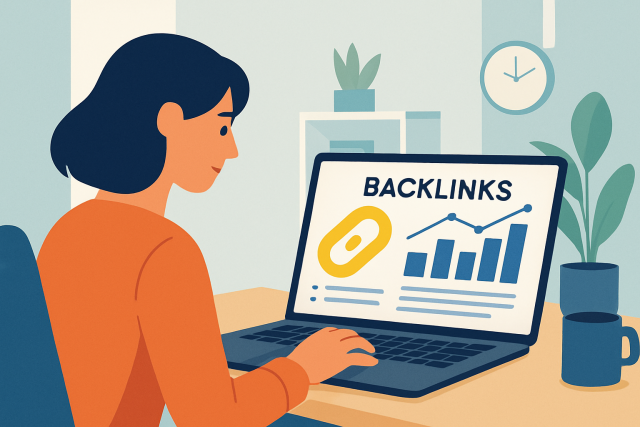
International link building ways to find quality backlinks abroad
Learn actionable techniques to build quality backlinks from foreign domains. This guide empowers you...

SEO link building is a vital piece of the puzzle when it comes to climbing search engine rankings. Terms like reciprocal links and natural links often leave newcomers scratching their heads. Getting a solid grasp of what these links mean and how they work behind the scenes can empower marketers and site owners to craft effective above-board strategies that foster real lasting growth.
A reciprocal link in SEO occurs when two websites agree to link back to each other. This backlink exchange is usually meant to share traffic and increase visibility and potentially give your SEO a nice boost.
Reciprocal links are like a digital handshake between two websites where each site agrees to nod to the other's content. It is similar to swapping business cards at a networking event—friendly and potentially rewarding. These days search engines get wary if they spot too many of these links, especially if they seem random or unrelated. The trick is to keep those links relevant and avoid going overboard.
Natural links are backlinks that appear on their own without any fancy deals or swaps between websites. They happen when one site gives a nod to another because its content is useful, relevant or trustworthy.
Think of natural links as those casual word-of-mouth recommendations you get from a friend who genuinely swears by a product or resource because it actually delivered. Since there’s no sneaky agenda or strings attached, search engines usually take these links as honest-to-goodness endorsements.
Reciprocal and natural links both have a role in bringing traffic and shaping rankings but are quite different in their purpose and how SEO treats them.
| Aspect | Reciprocal Links | Natural Links |
|---|---|---|
| Intent | A handshake deal where both parties agree to swap links | An organic thumbs-up you didn’t have to ask for |
| SEO Value | Moderate; can lose their charm if overdone | High; generally seen as genuine and trustworthy |
| Risk of Penalty | High if played too tough or irrelevant, often flagged as sneaky | Low; usually safe since they follow natural linking vibes |
| Trust Level | Lower, especially when reciprocal links are a bit too obvious | High, since they tend to be authentic recommendations |
| Link Acquisition | Negotiated back and forth between site owners | Earned through solid content and real authority |
This side-by-side comparison reveals that reciprocal links are sometimes handy but often carry more risk and inspire less trust from SEO than natural links.
Let’s dive into the world of reciprocal links in SEO. They can be a neat way to share some SEO love, boosting your site’s visibility by tapping into each other's audiences. It’s like a friendly nod between neighbors, helping Google see you’re part of a community.
However, it’s not all sunshine and rainbows. If overdone, search engines might get a bit suspicious, treating your link exchange as a bit too cozy, which can backfire. So, while reciprocal links can play a helpful role, it’s wise to keep things natural and avoid turning it into a link farm. In my experience, a well-balanced approach tends to work best.
Reciprocal links can definitely come in handy, especially when you’re working within niche partnerships or teaming up on content. It pays to tread lightly. Professional SEO tools like Semrush or Moz are great sidekicks here—they keep an eye on your backlink profile to ensure those reciprocal links stay relevant and don’t hog the spotlight in your overall link strategy.
Finding good reciprocal link opportunities takes a bit of digging, a keen eye for relevance and ongoing monitoring to keep things on track.
Kick things off by digging into potential partners—focus on sites in your niche that have content or audiences that naturally complement yours, like peanut butter and jelly.
Lean on SEO tools like Moz or Semrush to get the lowdown on domain authority and relevance, making sure these sites come across as trustworthy and not just smoke and mirrors.
Take a good look at their backlink profiles to confirm they’re playing by the rules and sticking to ethical linking practices.
Lay down clear and fair linking terms that put quality and relevance front and center, instead of just chasing numbers like it’s a link-counting contest.
Keep a regular watch on how those links perform—making sure they stay active and continue to do the heavy lifting for your SEO goals without slacking off.
Steer clear of classic pitfalls like swapping links purely to pad your numbers or teaming up with irrelevant or spammy sites—those moves often backfire and tank your rankings. Being upfront with your partners and picking them with care goes a long way in keeping your link profile authentic and trustworthy.
Gaining natural links typically boils down to creating genuinely valuable content and nurturing real, authentic relationships online. SEO strategies that keep the user front and center and stick to ethical practices are the ones that usually spark organic backlink growth.
Crafting insightful blog posts, infographics or how-to guides usually draws in links naturally over time. It is like planting seeds and watching them quietly grow. Outreach hits its stride when it is about forging real connections instead of firing off link requests into the void. Tools like Moz and Mangools are fantastic allies here because they offer topic research, competitor backlink analysis and tracking your link-building progress.

Visual representation comparing natural and reciprocal links within the digital ecosystem emphasizing trust and collaboration
Many SEO beginners often jump to the conclusion that all reciprocal links are harmful or that natural links just magically appear without effort. Reciprocal links can play a positive role in building a healthy link profile so long as they’re relevant and not overused. On the flip side, earning natural links usually takes steady effort and genuine engagement with no shortcuts.
14 articles published
Driven by a passion for crafting compelling digital narratives, Zarina Bharucha combines cutting-edge strategies with a keen understanding of consumer psychology to elevate brands in the competitive online landscape.
Read Pages
Learn actionable techniques to build quality backlinks from foreign domains. This guide empowers you...

Understanding what a contextual link is can transform your SEO strategy. Learn how these natural, re...

Explore top backlink sites tailored for small businesses that balance cost, ease, and SEO impact. Le...

Unlock the power of tiered link building services with this step-by-step guide, designed to maximize...